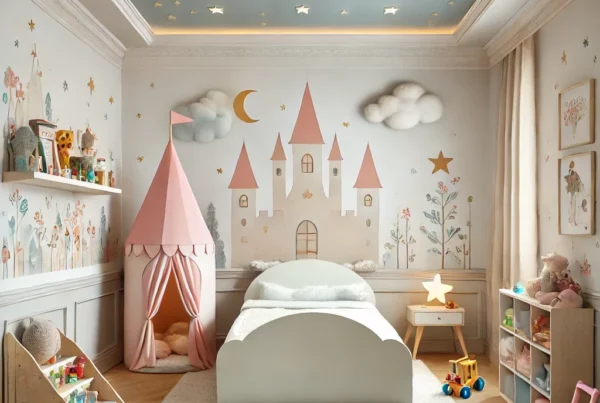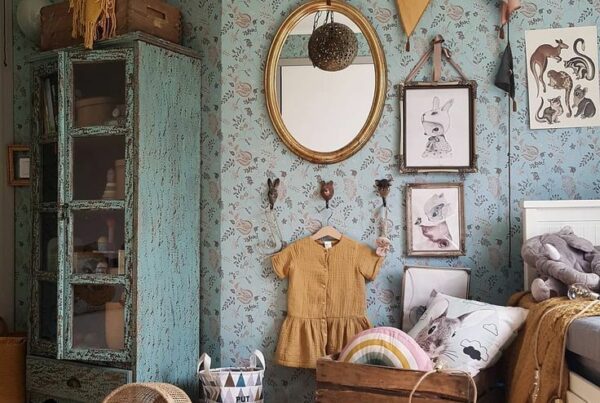In today’s world, creating safe, comfortable, and inspiring spaces for children is a key consideration for parents. This article explores the practical benefits of incorporating sustainable materials into kids’ soft furnishings and provides actionable tips for selecting items that foster both creativity and comfort. By understanding the impact of sustainable choices and how to design engaging environments, you can enhance your child’s play experience while promoting environmental consciousness.
Additionally, we will delve into essential elements of design, color psychology, and the latest trends in bedding textures, equipping you with the knowledge to create a nurturing and imaginative atmosphere for your child. Whether you’re looking to build cozy play nooks or select the right bedding, these insights will help you make informed choices that benefit both your child and the planet.
Table of Contents
Incorporating Sustainable Materials in Kids’ Soft Furnishings
As parents become increasingly aware of the impact their choices have on the environment, the demand for sustainable materials in children’s decor has soared. Not only does this trend help promote a healthier planet, but it also fosters a safer and more nurturing environment for our little ones. The incorporation of sustainable materials in kids’ soft furnishings is not just beneficial for the ecosystem; it can also influence children’s well-being and creativity, paving the way for a natural, vibrant upbringing.
Understanding Sustainable Materials
Sustainable materials are those sourced with minimal environmental impact, ensuring that resources are either renewable or can be recycled at the end of their lifecycle. Key examples include:
- Organic Cotton: Grown without synthetic pesticides or fertilizers, organic cotton is softer and safer for children’s sensitive skin.
- Bamboo Fabric: Recognized for its rapid growth and regenerative properties, bamboo requires significantly less water than traditional trees and produces a silky, soft fabric.
- Recycled Polyester: Made from recycled plastic bottles, this material helps reduce waste while providing durability and easy maintenance.
- Hemp Fabric: Hemp is a highly sustainable crop that requires little water and no pesticides, making it a robust and environmentally friendly option.
Benefits of Using Sustainable Materials
Incorporating these materials into kids’ soft furnishings offers a multitude of benefits:
- Non-Toxic Environment: Parents can rest easy knowing that sustainable materials often lack harmful chemicals, creating a safer space for children.
- Longevity: Sustainable fabrics are designed to endure wear and tear, providing lasting quality in high-use areas like playrooms and nurseries.
- Education and Awareness: Using eco-friendly materials promotes awareness about sustainability among children, encouraging them to appreciate and value the environment from a young age.
Practical Tips for Choosing Sustainable Soft Furnishings
When selecting soft furnishings, consider the following tips to ensure that your choices align with sustainable practices:
- Look for Certifications: Seek certifications such as GOTS (Global Organic Textile Standard) or OEKO-TEX, which confirm the authenticity of sustainable claims.
- Prioritize Local Brands: Supporting local brands not only reduces the carbon footprint associated with long-distance shipping but also promotes the local economy.
- Focus on Versatility: Choose furnishings that can easily transition from one room or stage of childhood to another; this extends their life cycle and minimizes waste.
- Custom Options: Explore opportunities for customization, which can lead to unique, personal creations made from sustainable materials.
Inspiring Examples of Sustainable Kids’ Soft Furnishings
To ignite your creativity, here are a few inspiring examples of sustainable kids’ soft furnishings:
- Organic Cotton Bedding Sets: Choose vibrant patterns and colors made from organic cotton to brighten a child’s room while ensuring their comfort.
- Bamboo Cushions and Throws: Soft bamboo cushions add a cozy touch and can be used for playtime or reading nooks.
- Hemp Area Rugs: Durable and stylish, hemp rugs can withstand the intensity of children’s play and serve as a beautiful centerpiece in any playroom.
By integrating sustainable materials into kids’ soft furnishings, not only do you cultivate a stylish and comfortable space, but you also instill the importance of environmental stewardship in the next generation. This critical choice allows parents to foster their children’s imaginations while simultaneously caring for the planet.
Creating Cozy Nooks for Imaginative Play
Creating a space that fosters imaginative play is essential for a child’s development. Cozy nooks serve as magical hideaways where children can dive into their fantasies, whether it’s being pirates on the high seas or explorers in a jungle. In this section, we will explore how to design these enchanting corners, incorporating elements that bolster creativity and comfort.
Designing the Perfect Cozy Nook
When designing a cozy nook, consider the following elements that contribute to both creativity and comfort:
- Location: Choose a corner of a room that feels safe and inviting. Areas near windows offer natural light and a connection to the outdoors, while quieter corners provide a more intimate setting.
- Soft Furnishings: Cushions, bean bags, and soft rugs create a comfortable seating area. Incorporate sustainable soft furnishings made from eco-friendly materials to add a tactile experience and ensure the nook is healthy for play.
- Enclosed Spaces: Use canopies, curtains, or bookcases to create a sense of enclosure. This helps evoke feelings of safety, allowing children to lose themselves in their imaginative worlds.
- Personal Touches: Allow children to personalize their nook with beloved toys, artwork, or themed decor that resonates with their interests. This ownership not only enhances engagement but also makes the space feel uniquely theirs.
Incorporating Play Elements
In addition to aesthetics, it’s vital to integrate elements that encourage active play:
- Interactive Play Materials: Consider adding items such as building blocks, dolls, or craft supplies. These materials inspire creativity and collaboration, supporting both solo and group play.
- Storytelling Props: Include puppets, costumes, or even a small bookshelf filled with storybooks. These can stimulate narrative play, inviting children to step into different roles and scenarios.
- Art Supplies: A small table with art supplies can transform the nook into a creative studio. Encourage your children to draw, paint, or craft, fostering their artistic expression in their special space.
Color and Lighting: Setting the Mood
The right color palette and lighting can significantly enhance a child’s nook, creating an atmosphere that encourages play:
- Warm Color Tones: Use warm colors like yellows, oranges, and soft blues to create a welcoming ambiance. These colors can evoke feelings of warmth, happiness, and creativity.
- Soft Lighting: Incorporate fairy lights, lamps, or even a small string of LED lights to create a soft glow. Avoid harsh overhead lighting; the aim is to make the nook feel serene and magical.
Encouraging Imaginative Interaction
Finally, the way you interact with your children in these cozy nooks can greatly influence their play experience:
- Join in the Fun: Participate in their games or storytelling. This not only strengthens your bond but also encourages them to develop confidence in their imaginative skills.
- Rotate Play Items: Periodically swap toys and materials in and out of the nook. This maintains their interest, creating fresh experiences and inspiring new narratives.
Creating cozy nooks for imaginative play transcends mere design; it’s about fostering a mindset that values creativity and exploration. By focusing on comfort, personalization, and sensory engagement, you can cultivate a magical space that nurtures your child’s imagination.
To delve deeper into creating engaging play environments, check out The Hygge House for more inspiration on creating cozy spaces that stimulate creativity and play.
 Color Palettes That Spark Creativity in Children’s Rooms
Color Palettes That Spark Creativity in Children’s Rooms
Creating an inspiring space for children is essential for their growth and development. The right color palette can transform a child’s room into a sanctuary of imagination and creativity. This section explores various color schemes that not only beautify the space but also stimulate artistic expressions and learning.
Understanding Color Psychology in Children’s Spaces
Color psychology plays a significant role in how we perceive and react to our environment. Children, in particular, are sensitive to colors, which can affect their mood, behavior, and even creativity.
- Blue: Promotes calmness and promotes concentration, making it ideal for study corners.
- Yellow: Associated with happiness and energy, it can inspire creativity and playfulness.
- Green: Represents nature, fostering a sense of balance and rejuvenation.
- Red: A color that can provoke strong emotions; use thoughtfully to highlight specific elements in the room.
Invigorating Combinations
Mixing colors can elevate the vibrancy of a child’s room. Here are a few unique combinations that ignite creativity and joy:
- Sunny Citrus: Combining shades of lemon yellow, lime green, and orange can create a cheerful and energizing atmosphere. These colors keep the room lively and inspire adventurous play.
- Cool Ocean Breeze: A palette of teal, soft blue, and sandy beige can evoke a calming seaside vibe. This combination soothes anxiety and encourages creativity through a relaxed environment.
- Whimsical Pastels: Soft pinks, lavenders, and mint greens can introduce a dream-like feel. This palette is perfect for fostering imagination while maintaining a tranquil atmosphere.
- Earthy Tones: Combining muted browns, deep greens, and warm yellows can create a nurturing and grounded space. These colors mimic nature, encouraging children to connect with their surroundings.
Accent Walls and Statement Pieces
Incorporating bold colors through accent walls or statement decor can stimulate a child’s imagination without overwhelming the entire space. Here are some ideas:
- Chalkboard Paint: Choose a wall to paint with chalkboard paint, providing both a creative outlet and an interactive element for kids. They can draw, write, and express their thoughts freely.
- Wall Decals and Murals: Opt for removable wall decals in bright colors or custom murals that reflect your child’s interests – from outer space to magical forests.
- Colorful Rugs and Bedding: Use vibrant rugs and bedding as focal points that can easily be updated as your child’s taste evolves, allowing for versatility while maintaining creativity.
Incorporating A Splash of Fun with Accessories
Accessories can serve as the spice of any room, and when it comes to children’s spaces, colorful accessories can fuel creativity while enhancing the overall aesthetics. Consider the following:
- Bright Wall Art: Display colorful artwork or framed pieces created by your children. This boosts their confidence and personalizes the space.
- Playful Furniture: Choose furniture pieces in fun colors or shapes, such as bean bags, poufs, or chairs that spark joy.
- Colorful Storage Solutions: Implement bins, shelves, and even painted bookcases to organize toys creatively while adding aesthetic appeal.
Finding Balance with Neutrality
While vibrant colors can boost creativity, it’s essential not to overwhelm the senses. Balancing bold colors with neutral hues can create a harmonious space. Use soft whites, greys, or beige as backgrounds to allow colorful elements to stand out without dominating the room.
Conclusion
Crafting a creative haven for your child goes beyond aesthetics; it fosters imagination, learning, and well-being. By thoughtfully selecting a color palette that resonates with their personality and stimulates creativity, you can create a room that supports their growth and dreams. For more insights on choosing the right colors and decor for your child’s room, visit Houzz Kids Room Decor.
 Trends in Textures: Choosing the Right Bedding for Comfort and Style
Trends in Textures: Choosing the Right Bedding for Comfort and Style
Choosing the right bedding involves more than just picking a color or pattern; it encompasses a range of textures that contribute to both comfort and style in your bedroom. As trends evolve, understanding these textures can help you create a cozy, stylish retreat. Below we explore the current bedding texture trends and how to select the best options for your space.
Understanding Bedding Textures
Bedding textures play a critical role in setting the mood and functionality of your bedroom. Different materials can create warmth, elegance, or a laid-back vibe. Here are a few current textures that are not only on-trend but also conducive to comfort:
- Brushed Cotton: This soft texture offers a cozy feel, perfect for cooler months. Its breathability makes it suitable for year-round use, ideal for those who need flexibility in their bedding.
- Linen: Renowned for its natural look, linen bedding adds an effortless charm. The crinkled texture looks inviting and becomes softer with each wash.
- Microfiber: A modern staple, microfiber is ultra-soft and hypoallergenic. Its smooth surface offers a contemporary alternative that complements various décor styles.
- Velvet: For a touch of luxury, velvet bedding is making waves. Its rich texture not only feels plush but can transform a simple bedroom into an opulent sanctuary.
- Natural Fibers: Products made from materials like bamboo or hemp emphasize sustainability while delivering a soft, breathable quality. These fibers are perfect for eco-conscious consumers seeking comfort.
Mixing and Matching Textures
The art of layering and mixing textures can elevate your bedroom’s aesthetic while maintaining a cozy atmosphere. Here’s how to effectively combine various materials:
- Layering Softness: Combine various textures such as a soft quilt with a linen duvet for depth. This mix can create a visually appealing and inviting look.
- Accent Textures: Use pillows and throws in contrasting textures to add interest without overwhelming the base bedding. For instance, pair a smooth cotton sheet with a chunky knit throw.
- Consistent Color Schemes: Maintain a cohesive color palette when mixing textures to avoid visual clutter. Soft neutrals or harmonizing tones can help tie together diverse materials.
Choosing Bedding Based on Personal Comfort
Ultimately, the goal of any bedding selection is to ensure personal comfort. Here’s how to navigate the vast range of available options:
- Consider Your Climate: The various textures work differently based on the local climate. Choose breathable materials like cotton for hot climates and cozier options like flannel for colder environments.
- Evaluate Allergies: If allergies are a concern, opt for hypoallergenic materials such as microfiber or bamboo, which can help reduce allergen accumulation.
- Think About Maintenance: Some textures require more care than others. If ease of maintenance is crucial, select materials that are machine washable and durable.
Final Thoughts on Texture Trends in Bedding
Textured bedding is more than just a design statement; it is about supporting your lifestyle and comfort preferences. Whether you opt for luxurious velvet, breezy linen, or practical microfiber, understanding the latest trends in textures allows you to create a sanctuary that reflects your personal style while offering utmost comfort.
To stay updated with the latest in bedding trends, you can check out this resource by KILZ. Discover how thoughtful fabric selections can lead not only to aesthetic beauty but also to a restful, rejuvenating sleeping environment. Sustainable materials, such as hemp and organic cotton, significantly enhance kids’ soft furnishings by creating a non-toxic environment, ensuring durability, and fostering early awareness about sustainability. Parents can make informed choices by looking for certifications like GOTS and OEKO-TEX, prioritizing local brands, and selecting versatile pieces that grow with their children while minimizing waste.
To create engaging and imaginative spaces for children, design cozy nooks that combine comfort with interactive play elements. Choose warm colors that uplift and inspire creativity, incorporate various textures in bedding for added comfort, and personalize the space with personal touches and creative accessories. Balancing vibrant tones with neutral backgrounds further nurtures a harmonious atmosphere conducive to play and learning.


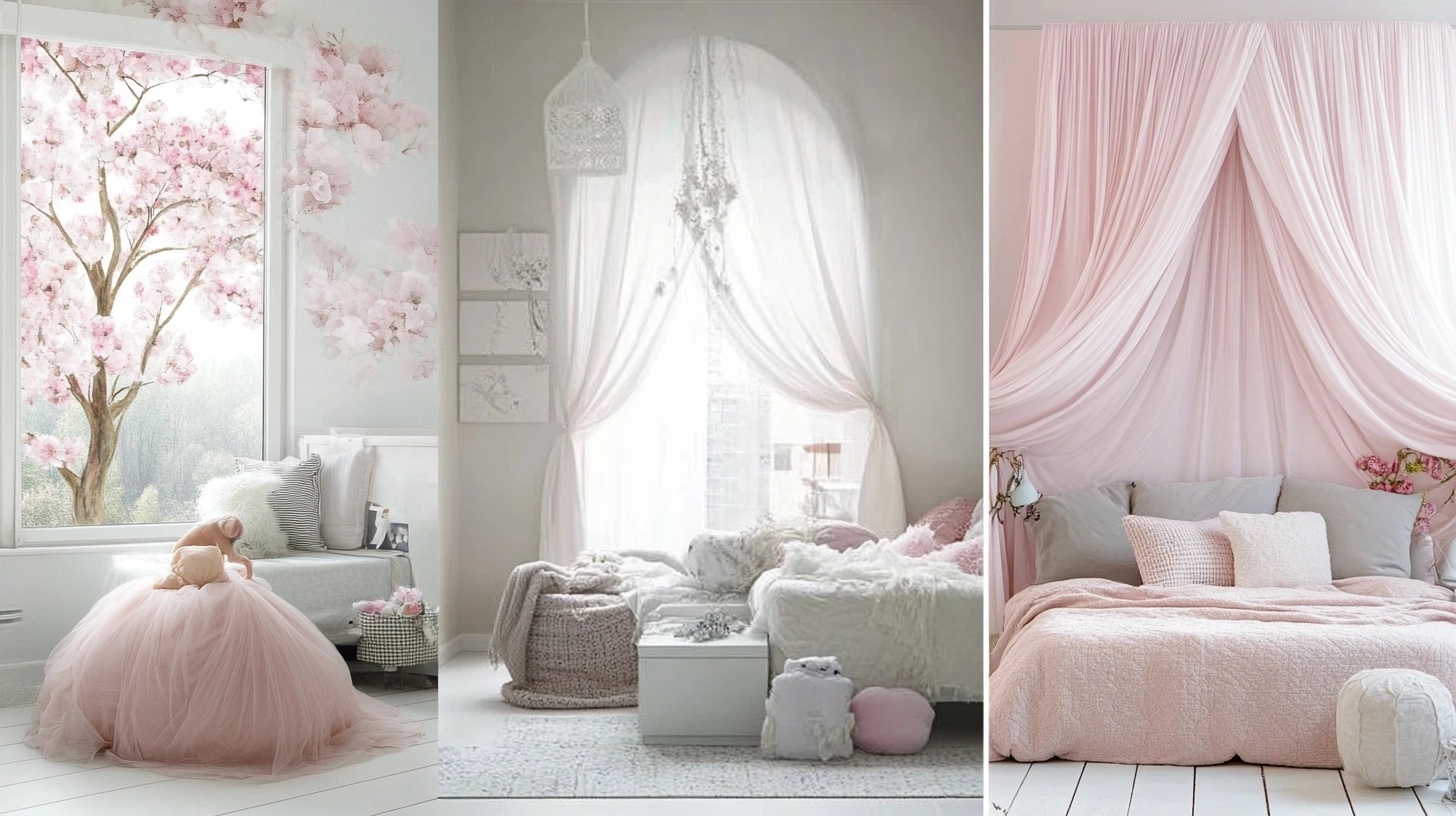
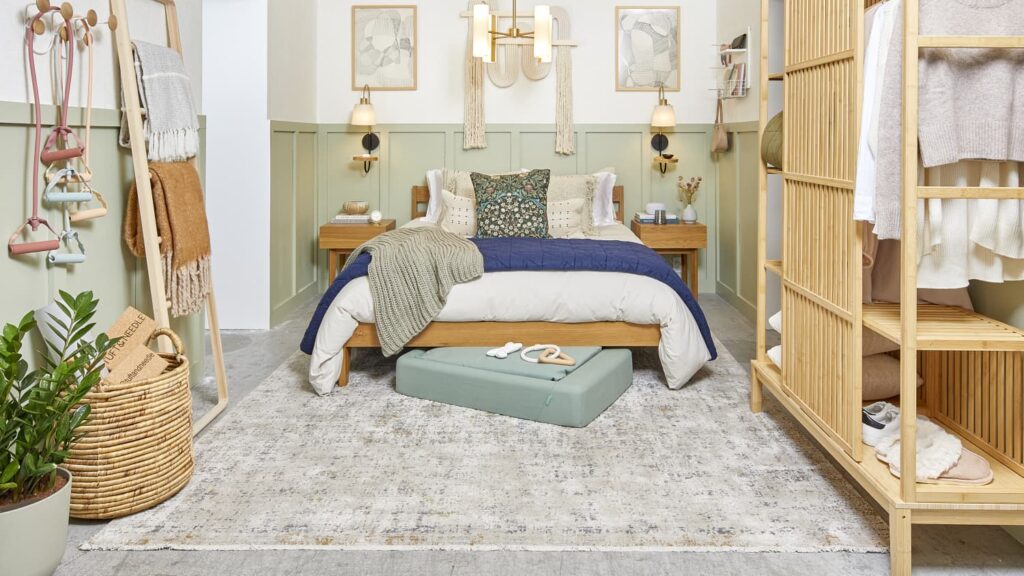 Color Palettes That Spark Creativity in Children’s Rooms
Color Palettes That Spark Creativity in Children’s Rooms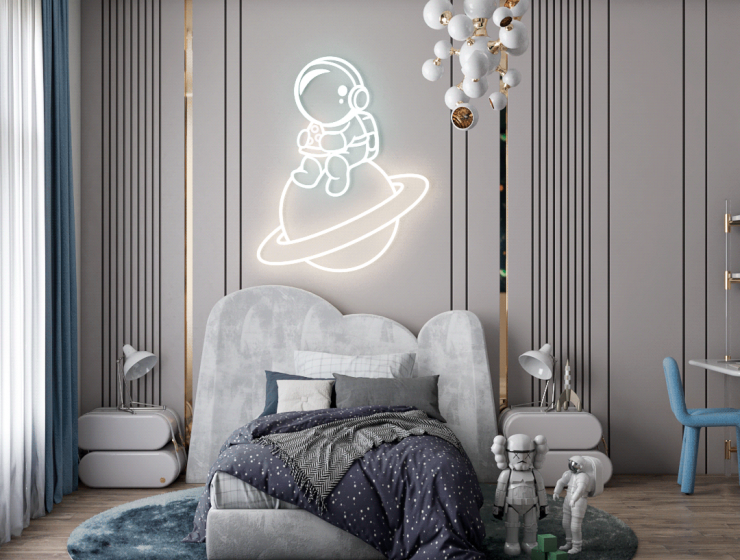 Trends in Textures: Choosing the Right Bedding for Comfort and Style
Trends in Textures: Choosing the Right Bedding for Comfort and Style